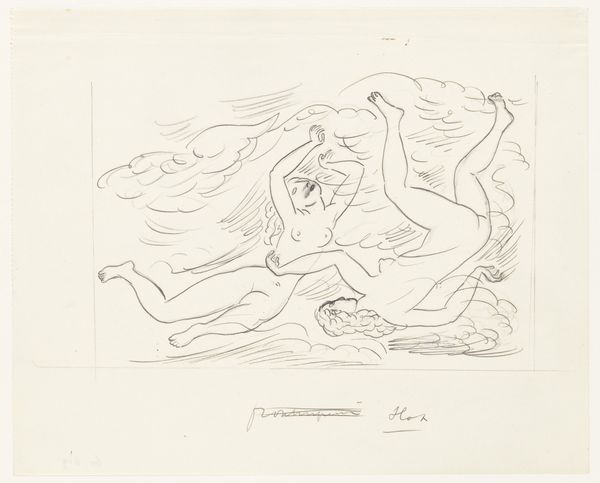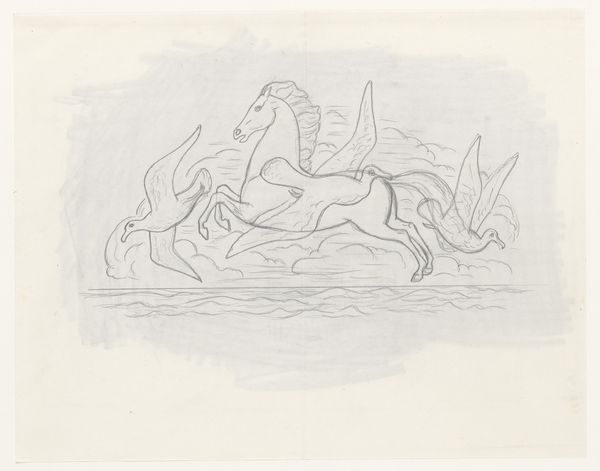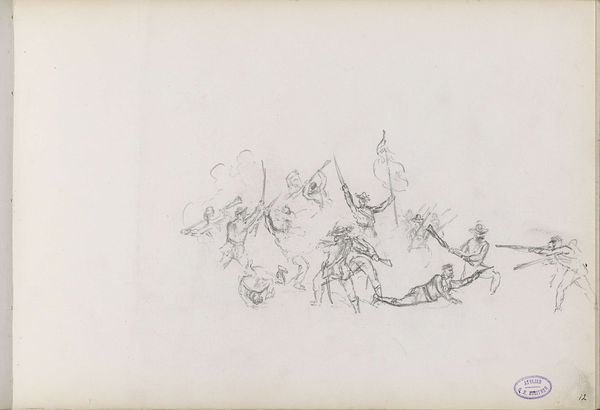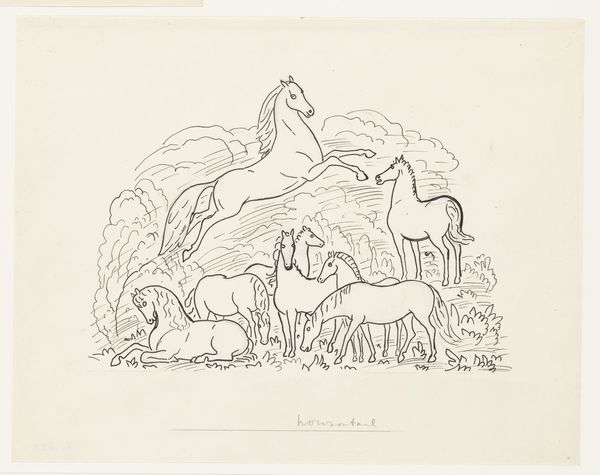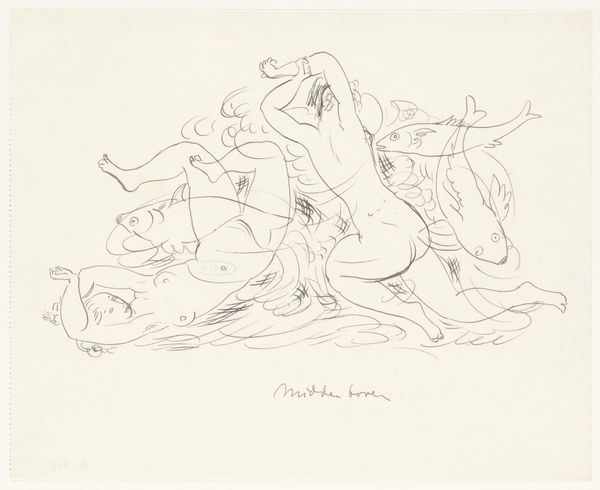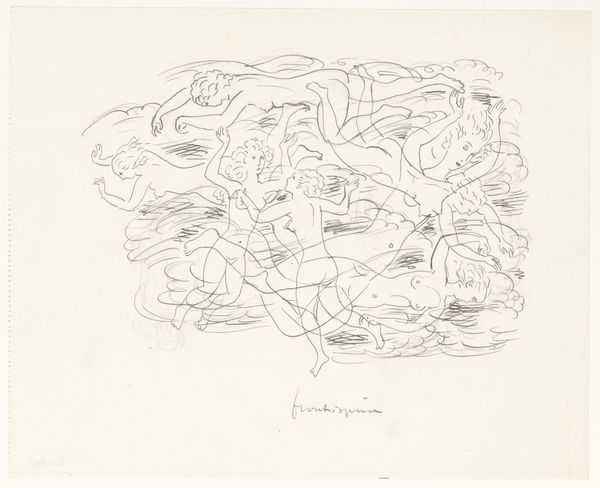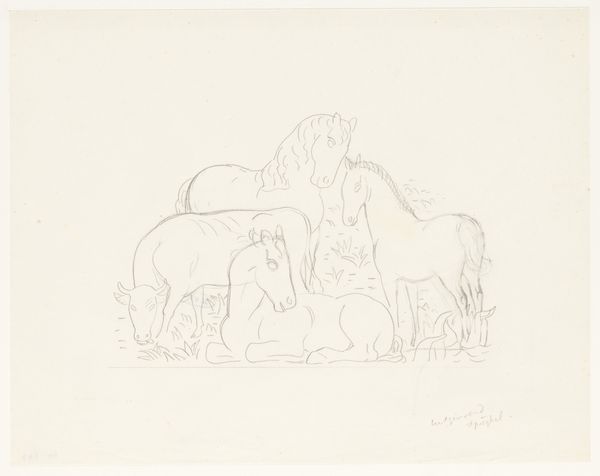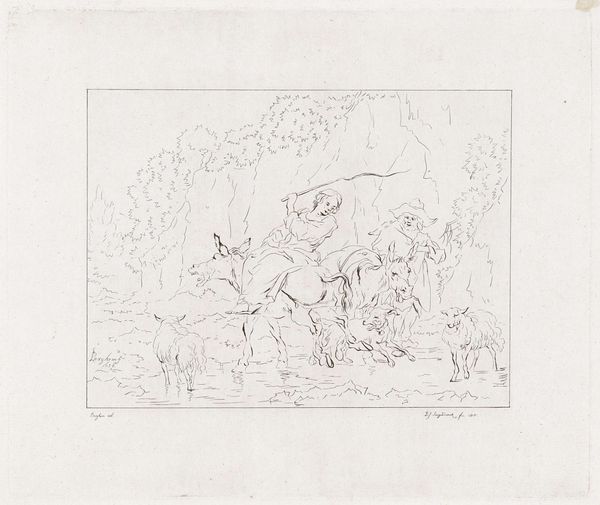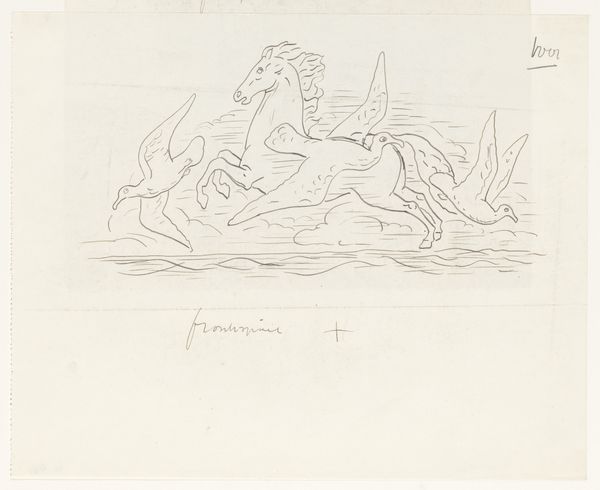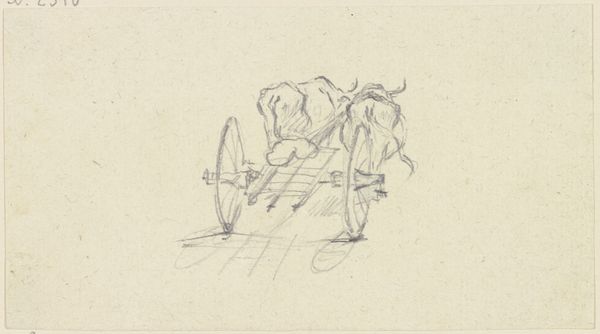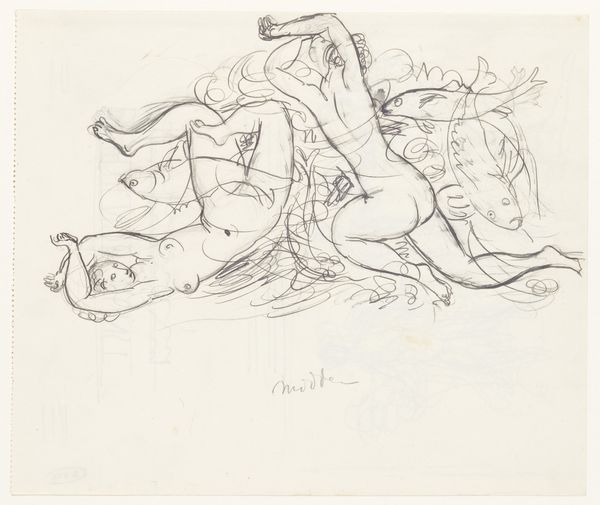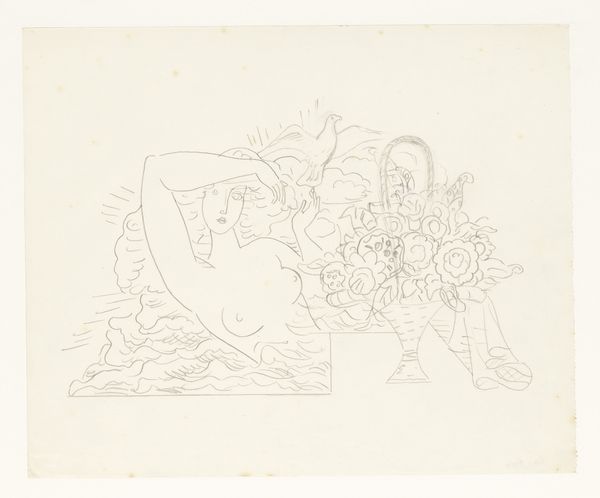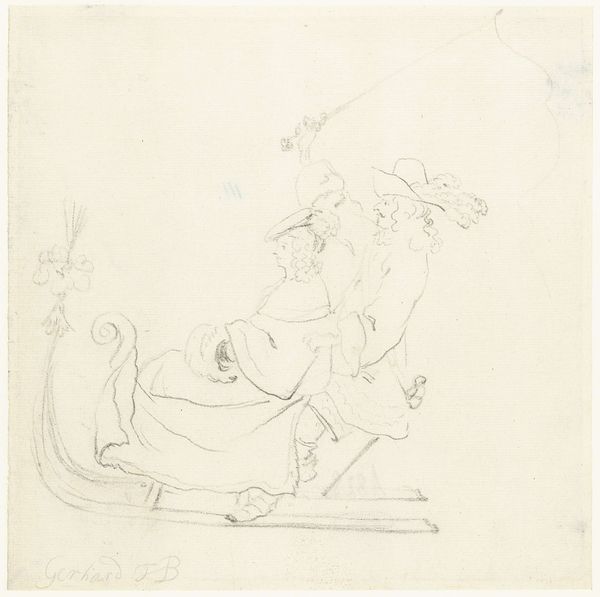
drawing, ink
#
drawing
#
animal
#
pen illustration
#
pen sketch
#
landscape
#
ink line art
#
ink
#
horse
#
line
#
pen work
Dimensions: height 217 mm, width 277 mm
Copyright: Rijks Museum: Open Domain
Editor: Here we have Leo Gestel's "Three Horses Among Flowers," a pen and ink drawing done sometime between 1891 and 1941. It's striking how delicate the line work is, and how the horses almost blend into the floral background. How do you interpret this work? Curator: It’s fascinating how Gestel places these powerful animals within such a traditionally feminine space, almost camouflaged within the blooms. The positioning makes you wonder about power dynamics; are we meant to consider the ways in which symbols of strength can be recontextualized, even subdued, by their surroundings? Are the horses truly free, or are they trapped by the flowers? Editor: That’s a great point. I was so focused on the surface level of the pretty lines. But what do you mean by "feminine space"? Curator: Flowers have historically been associated with femininity in art and culture. Consider how floral motifs have been used to represent women, domesticity, or even idealized beauty. In Gestel’s piece, does the floral setting empower or confine the horses? Does it invite us to rethink our stereotypical ideas about women and the roles society imposes upon them? Are these horses even stallions at all? Perhaps a band of mares in disguise? Editor: So, Gestel might be inviting us to think about gender roles through his art? Curator: Exactly! And it's important to remember this piece was created during a period of significant social and political change regarding women’s rights and societal expectations of women. An intersectional reading might see it also critiquing how the constraints placed upon marginalized identities, not only those of women, might ultimately result in a co-mingling of different modes of representation and expression, in a type of disguise, if you will. Does that perspective alter how you see the drawing? Editor: Absolutely. Now I see this drawing not just as decorative, but as a kind of commentary, one that is nuanced. I learned so much. Curator: Indeed! By examining the historical context and thinking critically about symbolism, art becomes a space for crucial dialogue.
Comments
No comments
Be the first to comment and join the conversation on the ultimate creative platform.
